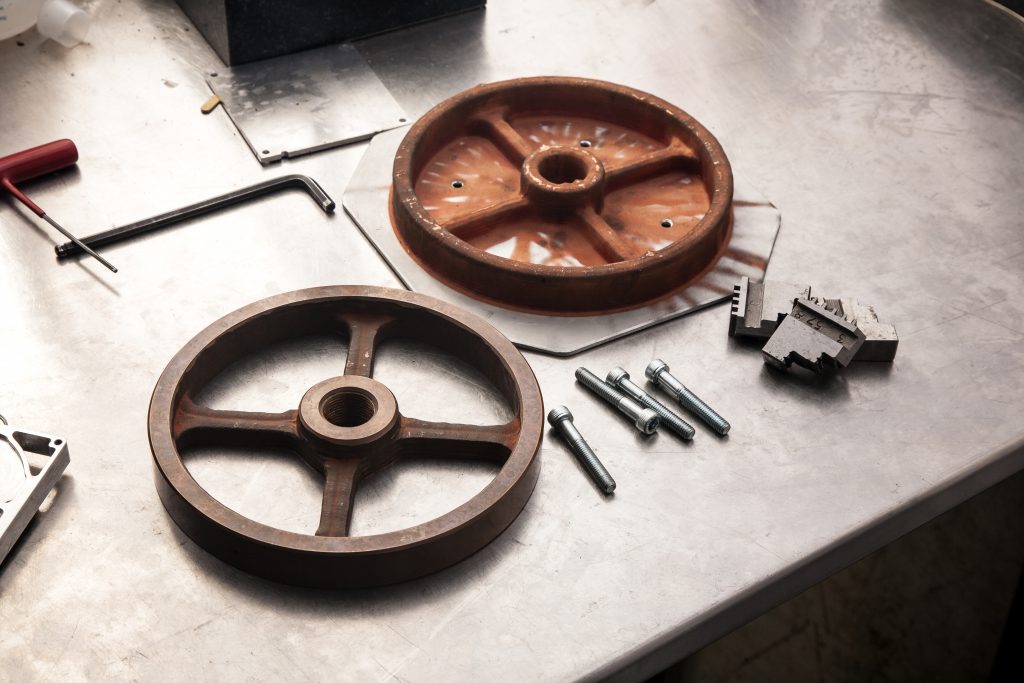Australian metal 3D printer manufacturer SPEE3D, partnered with the Advanced Manufacturing Alliance (AMA) and Charles Darwin University (CDU), is undertaking an AUD$1.5 million (USD$1 million) project for the Royal Australian Navy. Over the course of two years, government funding will back a pilot trial of SPEE3D metal 3D printing technology that aims to streamline patrol vessel maintenance for the force.
According to Melissa Price, Australia’s Minister for Defence Industry, “This high-tech machinery enables metal components to be produced quickly and efficiently, meaning our ships can get back on the water without delay.”
“This capability is a prime example of Australian innovation at its best and supports the Government’s unprecedented shipbuilding and sustainment plans.”
LightSPEE3D and WarpSPEE3D
SPEE3D leverages metal cold spray technology to build near-net-shape metal parts. An emerging 3D printing modality, cold spray is offered as a much faster alternative to laser-based metal 3D printing processes. By using compressed air for powder deposition, the method is also more cost-effective in many instances, as it avoids the use of expensive inert gases.
Since the company launched in 2015, it has released three systems, first the LightSPEE3D, with a Ø350mm x 300mm build, then the larger WarpSPEE3D, with a build of Ø1000mm x 700mm and, most recently, the SPEE3Dcell that integrates a heat treatment oven and 3 axis CNC milling machine with the metal additive manufacturing system. The WarpSPEE3D is the system of choice in this new project with the Royal Australian Navy.
The Royal Australian Navy’s pilot project
Copper and aluminum are the two materials that can presently be used on the WarpSPEE3D. As the most popular material for maritime applications, aluminum is expected to be the material of choice for the Navy due to its lightweight, ease of fabrication and resistance to corrosion and fatigue.
Throughout the pilot project with the AMA and CDU, SPEE3D aims to significantly increase part supply to the Navy compared to components available in a regular supply chain. The trial is expected to be a world-first in the maintenance of Navy patrol vessels.
3D printing in defense
Since early 2018, the Royal Australian Navy has been running weekly workshops to train its engineers in CAD and 3D printing in the hope of improving its part supply chain. Elsewhere within the Australian Department of Defence, the Defence Science and Technology Group has developed a 3D printing program for fixing and strengthening aircraft parts.
3D printing is proving to be an especially valuable means of remote part supply and maintenance for armed forces all around the world. This year, U.S. Army Secretary Ryan McCarthy issued a directive placing 3D printing at the center of its modern policy. The UK Ministry of Defence (MoD) also recently outlined approaches to leveraging additive manufacturing in the interest of national security.

Keep up to date with the latest developments in 3D printing. Subscribe to the 3D Printing Industry newsletter, follow us on Twitter and like us on Facebook.
Our 3D Printing Jobs service is now live. Post a job or advance your career in 3D printing now.
Featured image shows a demonstration of cold spray 3D printed parts pre and post-machining. Photo via SPEE3D.


